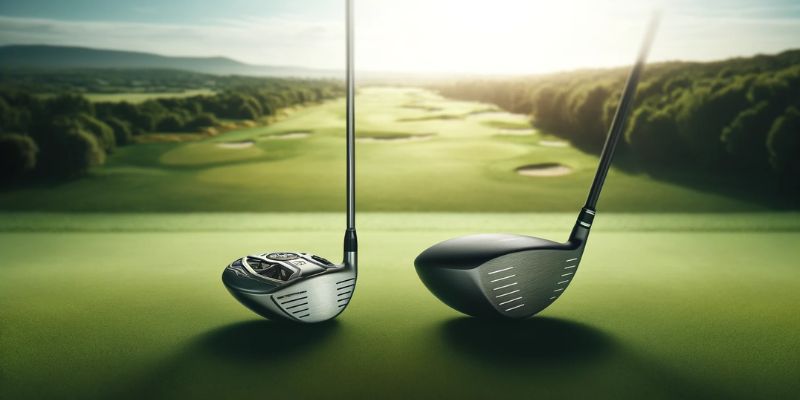Lightweight vs heavy golf drivers have sparked debates among golfers seeking to optimize their game.
The right choice can significantly influence your performance on the course, affecting everything from swing speed to control.
The Benefits of Lightweight Drivers
Lightweight golf drivers are designed to enhance swing speed and distance.
They are particularly beneficial for players with slower swing speeds, including many amateurs and senior golfers.
By reducing the overall weight of the driver, manufacturers aim to allow for a faster swing, which can translate into greater distance off the tee.
Key Advantages of Lightweight Drivers:
Increased Swing Speed:
Less weight means your swing can be faster, helping to propel the ball further.
Easier Handling:
A lighter driver is easier to control, which can help improve your accuracy and consistency.
Reduced Fatigue:
Over a full round of golf, carrying and swinging a lighter driver can lessen muscle fatigue.
Lightweight drivers are often made from advanced materials like titanium or composite blends, which provide strength without adding extra weight.
When to Choose a Heavier Driver
Heavier golf drivers, on the other hand, offer benefits that might appeal to players with faster swing speeds who can handle the extra weight without sacrificing tempo or balance.
A heavier driver can provide more stability and is often preferred by players looking to shape their shots more effectively.
Reasons to Opt for a Heavier Driver:
Enhanced Stability:
The extra weight helps keep the driver steady through the impact zone, potentially increasing accuracy.
Better Feedback and Control:
Heavier drivers can offer more feedback during the swing, which many experienced golfers appreciate for better control.
Wind Resistance:
In windy conditions, a heavier driver can be advantageous as it helps keep the ball flight lower and more controlled.
Personalising Your Driver’s Weight
Customizing your driver’s weight to suit your individual style and needs is crucial.
Many modern drivers come with adjustable weights that allow golfers to change the club’s balance according to their preferences and the playing conditions.
Tips for Customizing Your Driver:
Experiment with Different Settings:
Use a driving range or a fitting session to test various weight configurations.
Consult with a Pro:
A professional fitting can provide insights into how different weights affect your swing and ball flight.
Consider Your Entire Bag:
Ensure that your driver’s weight complements the other clubs in your golf bag for a consistent playing experience.
Choosing between a lightweight and heavy golf driver depends on your personal swing characteristics and what feels best for your game.
Both options offer unique advantages, and the right choice can lead to improvements in both distance and accuracy.
How do I know if a lightweight or heavy driver is better for me?
The best way to determine whether a lightweight or heavy driver suits you is to test both in a controlled environment like a golf simulator or with a professional fitter who can analyze your swing speed and style.
Can switching to a lightweight driver improve my driving distance?
Yes, switching to a lightweight driver can improve your driving distance, especially if you have a slower swing speed. The reduced weight allows for a faster swing, which typically leads to greater distance.
Are there any disadvantages to using a heavier driver?
The main disadvantage of a heavier driver is that it can be more difficult to swing if you do not have the strength or swing speed to handle the extra weight. This can lead to decreased performance and increased fatigue.

